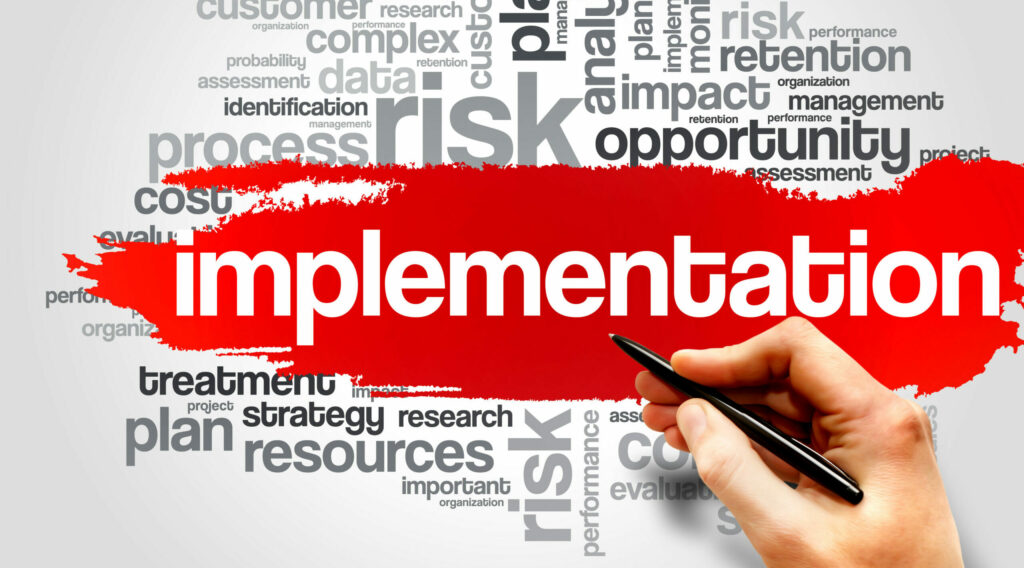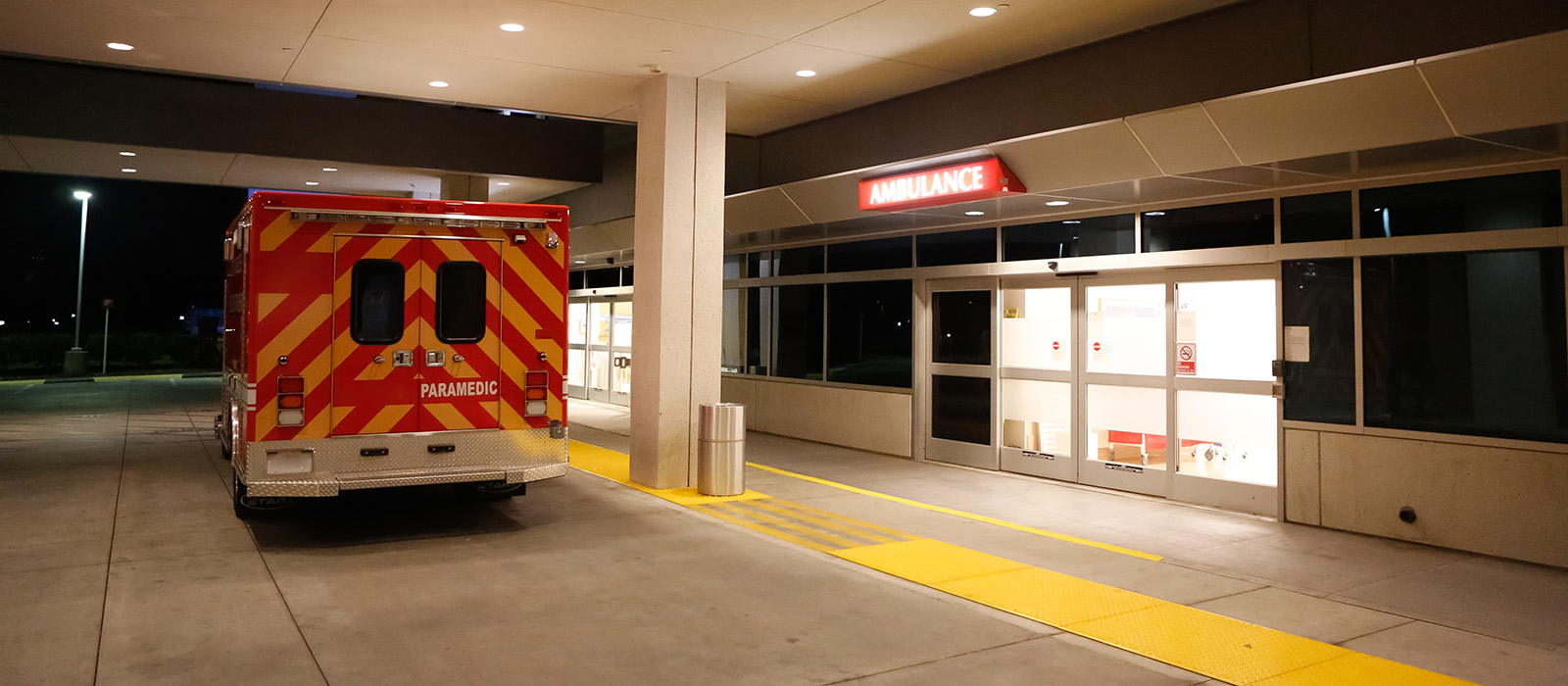Compliance with The Joint Commission’s New Water Management Standard Relies on Risk Assessment

Most healthcare facility managers already have in place a water management plan that outlines control measures for mitigating the risk of waterborne pathogens. Despite this, many of those same facility managers find themselves struggling with how to implement these plans in line with The Joint Commission’s (TJC) new water management program standard for the Hospital (HAP), Critical Access Hospital (CAH), and Nursing Care Center (NCC) accreditation programs.
The chief reason for this challenge is that, to date, water management plans have tended to outline anything and everything that could go wrong, but prescribe no specific steps for how to prevent potential issues. Fortunately, the answer to this implementation challenge lies in your facility.
By tailoring a water management plan to address specific vulnerabilities in a specific building and its water systems, it’s possible to create a clear process for preventing the spread of healthcare acquired infections (HAIs) that can result from waterborne pathogens. More importantly, this insight into a facility’s unique risks can shift facility managers’ reactive approach to mitigating waterborne pathogens risks to a preventative stance that saves lives and easily brings facilities into compliance with the new standard, EC.02.05.02, EPs 1–4, by TJC’s deadline of January 1, 2022.
Making site-specific water management plans
Although TJC’s EC.02.05.01 EP 14 (for hospitals and critical access hospitals) and EP 6 (for nursing care centers) set clear expectations for minimizing pathogenic biological agents in certain water systems, it’s become clear that having a water management plan does not on its own eliminate the problem of waterborne pathogens in healthcare facilities. As a result, TJC’s updated standard hones in on water management plan implementation. Its aim is to establish effective control measures to prevent HAIs resulting from waterborne pathogens.
TJC’s updated standard does not provide direction about how to implement a water management plan, but this implementation does not need to be difficult. It should begin with a risk assessment to identify and address a facility’s specific vulnerabilities.
The first area to assess is the facility’s water quality. Typically, hospital facility managers rely on utility water quality reports for this step, but such reports can be misleading. That is because water quality is a dynamic parameter. Once water enters a building, it’s quality is affected by a range of factors including the age of the pipes and building systems and the amount of biofilm buildup in these systems. The further water moves from the main, the greater its potential to decrease in quality. Gaining more accurate insight into water quality depends upon monitoring at key points within the facility to gauge changes in water quality parameters against baseline measurements.
However, since water quality can change frequently, it’s also important to determine how frequently these areas should be monitored. To gauge frequency, it helps to understand the factors that affect water quality and create a risk for the spread of waterborne pathogens.
For example, cooling tower testing is often conducted in the summertime when the water in these tanks falls within the ideal temperature range for Legionella and other bacterial growth. However, during the summer months the water in these tanks is constantly circulating to support continuous air conditioning use. A better time to test might be in spring, before the air conditioning has turned on and the stagnant water that best supports Legionella is aerosolized. Recognizing stagnation as a driving risk factor for the spread of waterborne pathogens is key to establishing a useful testing schedule.
Of course, not all spaces will demand the same intensity of monitoring. To create a plan for where to monitor and how frequently, the site-specific risk assessment must identify the types of spaces and equipment that use water. This falls in line with the updated standard’s requirement for a written plan and diagram of all water supply sources, treatment systems and control measures, processing steps and all end-use points.
Facility managers may find that this document provides an invaluable roadmap to implementation. Items to highlight on this water system diagram include:
- Locations within the hospital with infrequently used outlets, such as showers.
- Construction or renovation sites, where water has been turned off and potentially left to stagnate.
- Areas where water supplies critical equipment, such as dialysis machinery.
- Spaces that support sensitive populations. Units serving bone marrow transplants, pediatrics or cardiac intensive care, for example, may require special attention to water quality.
Understand your options
In the course of performing this risk assessment, facility managers may find that existing building systems can’t effectively support the needs outlined by the water management plan. Some areas in the hospital may not be capable of getting the hot water hot enough or the cold water cold enough. Perhaps some areas are unable to achieve the appropriate levels of disinfectant. If building systems cannot support the plan, it is important to determine the most cost-effective and least disruptive solution to address potential issues or vulnerabilities.
These solutions are not always easily identifiable to the professionals facing day-to-day maintenance issues. For example, if old plumbing can’t heat water adequately, facility managers feeling the pressure of an auditor’s warning may opt to replace floors of piping at steep cost. Commonly facility managers receive recommendations from vendors to address low levels of chlorine by shutting down the water system to shock it. These are expensive, disruptive solutions that may not be feasible—or even necessary.
Facility managers should seek an industrial hygienist teamed with an engineer to help evaluate systems for risk as well as help identify potential interim and permanent measures to address vulnerabilities within systems. Working with trusted partners in these areas can identify a range of potential solutions to your facility’s unique challenges and create pathways for moving toward more effective long-term improvements.
Develop an implementation team
Industrial hygienists and engineering professionals can serve as key partners in this process, but facility managers will find that implementing an effective water management plan begins by reaching out to departments in the healthcare facility. Infection preventionists and environmental health and safety professionals can be critical allies in this work. These professionals can help facilities experts better understand the needs of at-risk populations and develop corrective actions. This collaboration also presents an excellent opportunity to help infection prevention professionals better understand how the environment may contribute to dangerous outbreaks of waterborne pathogens.
Facility managers should also connect with biomedical engineers to better understand the care requirements of critical equipment. Although it may be necessary to identify distinctions between areas of responsibility, it’s important that facility managers have clear insight into the quality of water going into critical pieces of equipment and who is monitoring the water quality coming out. Additionally, having a solid understanding of the systems serving equipment (e.g., dialysis equipment) in addition to the maintenance measures for the equipment (e.g., routine testing) will provide a more comprehensive preventive maintenance program.
It is also critical to have clear communication with water treatment contractors. It may be tempting to rely on a water treatment vendor’s expertise to provide recommendations for maintaining water quality, but you first need to understand that contractor’s expectations for managing a healthcare facility’s unique issues. Ask questions to ensure that appropriate action is being taken on a suitable time frame. After all, implementation of a water management plan falls squarely on the shoulders of the facilities department, so it’s important to know all members of the team are performing as expected.
Become more proactive with water management
With the January 1, 2022, effective date of EC.02.05.02, EPs 1–4, fast approaching, it’s critical that healthcare facility managers have a clear understanding of how effectively they can implement their water management plan. It’s a sure bet that TJC auditors will ask to look at water management plans and request reports that demonstrate action around these areas.
It is not an easy task to take something as large as water risk management and implement it for an entire hospital. It’s going to take time and potentially create more questions as work proceeds. There can be no plug-and-play solution with this type of program because with something as dynamic as waterborne pathogens, every building, even from floor to floor, is going to be different. Having a site-specific plan is critical.
Fortunately, facility managers will find that this site-specific plan creates a clear path forward to improvement. Once a risk assessment has been conducted and a site-specific implementation plan is in place, prevention of HAIs due to waterborne pathogens really is as simple as updating specific line items in your work order system. More importantly, it moves healthcare facilities to a more effective practice of mitigating HAIs caused by waterborne pathogens.
Assessing your risks and developing a site-specific plan doesn’t have to be difficult. EH&E can help facility managers navigate this large task and create a robust, fully compliant and preventative water management plan. If you’re ready to take a more proactive stance, contact EH&E today.
Subscribe
to our blog
"*" indicates required fields




